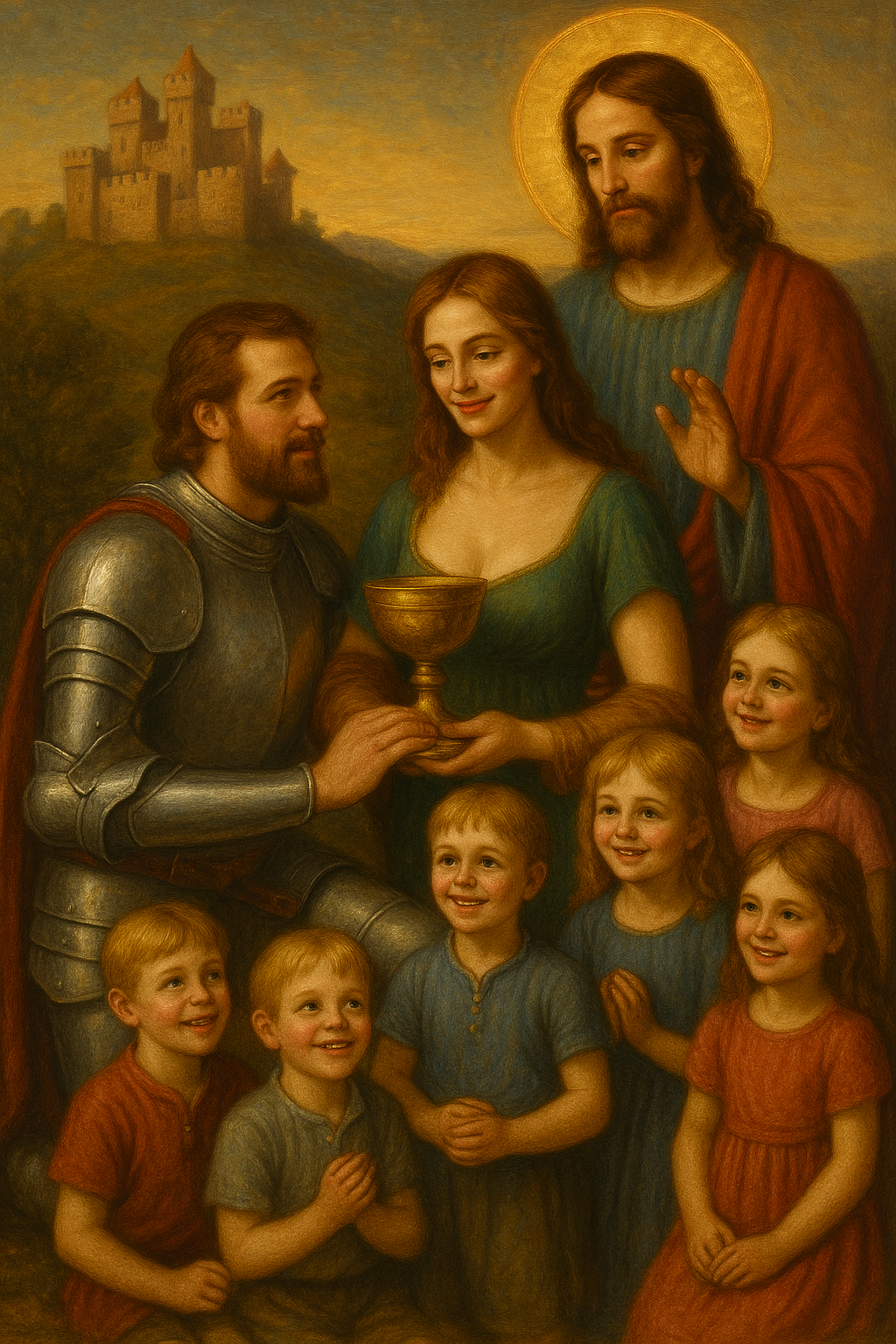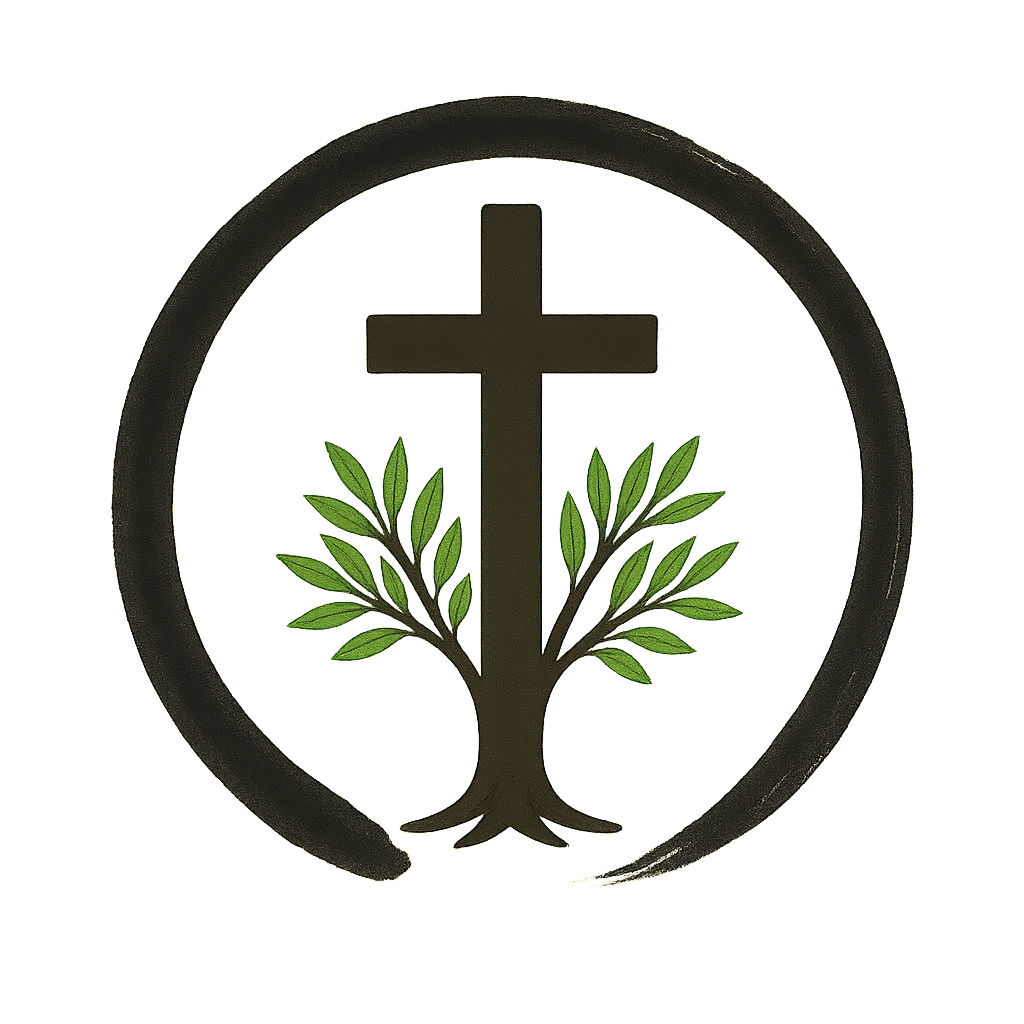Parzival and the Path of the Grail – The Way of Individuation between Christ and Man
For Carl Gustav Jung, every process of individuation begins with the recognition of one’s own shadow – the honest awareness of what has been suppressed, denied, or forgotten.
Repentance, Penance, Sacrifice, and Redemption
From this realization arises repentance: not as moral self-condemnation, but as an inner awakening to the estrangement from one’s own soul.
Out of repentance grows penance – a conscious turning toward the light hidden within darkness. For Jung, penance is not submission but transformation: an inner turning in which the individual assumes responsibility for the soul’s journey.
Sacrifice follows as the necessary step of transformation. It is the release of personal will, of fixed images and certainties. Jung sees in sacrifice the moment when the ego surrenders to the Self – as Parzival relinquishes his pride and learns to ask the question born of compassion.
In sacrifice, the ego is laid down so that the divine Self may be born.
From this arises redemption: not as grace bestowed from without, but as an inner restoration of wholeness. Redemption means that what was divided is reconciled, that light embraces shadow, and the soul returns to its origin.
Thus, the path of repentance, penance, sacrifice, and redemption becomes the inner alchemy Jung describes as individuation – the becoming of what one truly is in the deepest sense.
Parzival and the Path of Individuation
In the story of Parzival, Jung saw the archetype of the human soul that must journey through ignorance, guilt, and separation toward the unity of the Self. The tale of the knight is not an outer adventure but an inner pilgrimage – a movement of the soul through darkness, temptation, repentance, and purification.
1. The Foolishness
Parzival begins as the pure fool – innocent yet blind. His striving for honor and recognition springs not from wisdom but from unawareness. He acts without understanding and wounds without knowing. In Jung’s language, this stage represents the unconscious ego, still separate from the depth of the soul.
2. The Repentance
Through the pain of guilt – the death of Ither and the silent visit to the Grail Castle – Parzival is brought to repentance. He discovers that true knowledge lies not in victory but in compassion. Here begins consciousness: the first glimpse of the shadow. Repentance means: I recognize myself as the source of my own suffering and become willing to change.
3. The Penance
Through his meeting with Trevrizent, the hermit, Parzival enters the stage of penance. He lays aside the quest for worldly glory and turns inward toward truth. This is the alchemical nigredo – the black phase in which all that is old dissolves so that new life may begin. Penance here is not submission but purification: the realization that only love heals the human heart.
4. The Sacrifice
On his path to the Grail, Parzival must sacrifice his ego. He loses the illusion of control, the pride of the hero. Sacrifice means surrendering the personal will to the higher will. In Jung’s terms, the ego yields so that the Self may reveal itself. Like the phoenix rising from its ashes, the new human being is born – purified, humble, and radiant with inner strength.
5. The Redemption
Only when Parzival finally asks the question – “What ails you, my uncle?” – is the circle of individuation complete. Repentance becomes compassion, penance becomes wisdom,
sacrifice becomes love. And in this moment lies redemption – not only of the king but of Parzival himself. He becomes guardian of the Grail because he has learned to recognize
the suffering of the other as part of his own soul.
The myth of Parzival thus mirrors the inner process Jung calls individuation: the passage through guilt and darkness toward unity – the reconciliation of light and shadow, spirit and matter, man and God.
Parzival, Christ, and the Path of Redemption
In its deepest symbolism, Parzival’s journey mirrors the life of Christ as it unfolds within the human soul. What appears in Jesus as divine incarnation becomes, in Parzival, the inner drama of the human being rediscovering the divine within.
The Incarnation – The Seeker Enters the World
As Christ enters the world, so Parzival enters life – pure, yet unknowing. Both descend into the realm of opposites: guilt, temptation, and suffering. Incarnation means that the light of spirit enters the matter of humanity. Here begins individuation: the divine Self seeks to be realized in the human form.
The Repentance – The Recognition of Separation
Parzival’s guilt and Christ’s passion arise from the same realization – the separation of humanity from God. For Jung, this is the moment of shadow-awareness: the painful recognition of division within the soul. Repentance is not moral remorse but the grief of distance from the source. “My God, why hast Thou forsaken me?” – the cry that begins healing.
The Penance – The Desert
As Christ retreats into the desert, Parzival withdraws to Trevrizent’s hermitage. Here, outward certainties dissolve; the ego is tested and purified. Penance means stripping away the masks of self until only truth remains. In the nigredo, the dark night of the soul, the old self dies so that the new may be born.
The Sacrifice – The Cross and the Grail
The Cross of Christ and the Grail of Parzival mirror the same inner reality – the surrender of personal will to divine will. Christ offers himself to redeem humanity; Parzival offers his ego to awaken divine love within. Both reveal that the true sacrifice is not death but transformation –
the passage from ego to Self, from separation to wholeness.
The Redemption – The Heart as Grail
When Parzival finally asks the compassionate question, the gate of redemption opens. He perceives the other’s pain as his own – and through compassion becomes godlike. This is the resurrection of the heart. As Christ rises from the tomb, Parzival becomes keeper of the Grail – not as conqueror, but as servant of the light.
Thus Christ and Parzival meet within the inner human being. Both paths lead through darkness into light, through guilt to grace, through sacrifice to rebirth. What the Cross is to Christ, the Grail is to Parzival – the union of heaven and earth, man and God.
The Goal – The Alchemy of the Heart
In Jung’s language, this is individuation; in mysticism, redemption; in the Gospel, the kingdom of God within you. The person who follows this path becomes the living symbol of a divine process: dying to oneself in order to awaken in God.
I live, yet not I – but Christ lives in me. (Galatians 2:20)
Parzival thus becomes the Western image of enlightenment, the bridge between Christ-consciousness and the individual soul – a path which the Monastery Nigredo continues as a living practice: the way of repentance, sacrifice, and rebirth into light.
The Sword of the Spirit – The Line Between Heaven and Earth
The sword is one of the oldest symbols of transformation. It divides and sanctifies – it cuts away illusion so that truth may appear. In the warrior’s hand it destroys; in the sage’s hand it reveals.
The Separation
Every seeker experiences first the separation – between ego and Self, light and shadow, heaven and earth. This is the necessary cut of awareness, the awakening from ignorance.
As Parzival’s sword brings guilt, so Christ bears the wound of love divided from human suffering. Both carry the wound that becomes the gate to wholeness.
The sword of the spirit does not cut to destroy but to disclose. It symbolizes discernment – the ability to distinguish truth from illusion, being from seeming. Only he who faces shadow can bear light.
For the word of God is living and active,
sharper than any two-edged sword. (Hebrews 4:12)
This sword is the Word, the living Logos, through which divine order enters the chaos of the world.
The Union
Only he who has wielded the sword may lay it down. Parzival lowers his sword when he realizes that true heroism lies not in conquest but in surrender. Christ, too, lays down the sword in Gethsemane:
Not my will, but Thy will be done.
Thus the sword becomes the symbol of reconciliation. What was once divided – spirit and flesh, heaven and earth, man and God – meets in the center of the heart. The cut becomes the seam that heals.
He who carries the sword of the spirit
does not fight against life, but for it.
The Holy Grail – The Heart as Vessel of Light
The Grail is the deepest symbol of Christian mysticism and alchemy. It is the vessel of transformation, where divine and human, blood and light, earth and heaven unite. In Jung’s language, the Grail is the Self – the center where all opposites are reconciled.
Parzival’s quest for the Grail is the soul’s longing for wholeness. He believes he seeks a sacred object, but in truth he seeks the divine light within himself. The Grail is not a golden chalice,
but the heart of the redeemed human being – as the cup holds wine, so the heart holds divine love.
The light that shines within the Grail is the light of the Self. It radiates not from without but from the innermost center. Whoever drinks of it knows: I am both vessel and content, seeker and sought.
Blessed are the pure in heart,
for they shall see God. (Matthew 5:8)
The Grail thus becomes the daily practice of the soul – to endure, to listen, to act with love.
Within it the paths of Christ and Parzival, of East and West, of thought and faith, are united.
The Path of the Grail in Man
The Inner Alchemy of Faith
The path of the Grail is not an outer quest but an inner work – a silent process through which the human becomes transparent to the divine. It begins in ignorance, passes through pain and repentance, through penance and sacrifice, until the heart opens to the light.
In alchemical language, darkness turns to gold, chaos to clarity, man to soul. What Jung called individuation, the mystics called the divinization of man – the reunion with the source from which all life flows.
Thus each person who walks this path becomes a guardian of the Grail within. He carries the light of awareness through the darkness of the world, recognizing that every trial, every loss, every wound is part of the divine work shaping the soul.
In the Monastery Nigredo, this path is not taught but lived – in prayer, in simplicity, in compassion, and in trust in the light.
The kingdom of God is within you. (Luke 17:21)
And in that knowing, the soul comes to rest – in the light that never fades.

